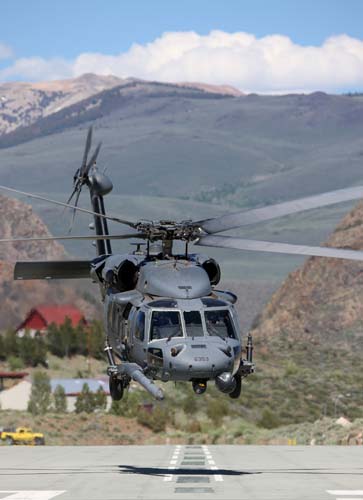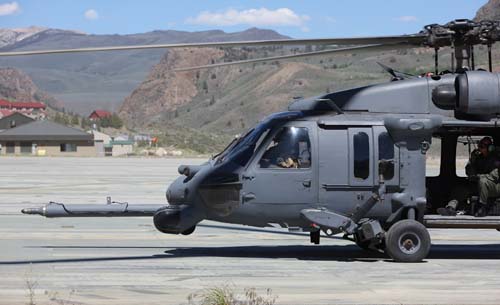Helo With a Halo
The mysterious stealth chopper U.S. Navy SEALs left behind
/https://tf-cmsv2-smithsonianmag-media.s3.amazonaws.com/filer/40/9b/409b132f-91fe-44dd-bad4-fe1185901ef8/chopper_tail.jpg)
Plenty of buzz going around about the mysterious stealth chopper left behind by U.S. Navy SEALs after they shot and killed Osama bin Laden last Monday morning, local time, in Pakistan.
Having suffered technical problems and a hard landing, the helo apparently couldn't fly back out of bin Laden's compound, and became evidence to be destroyed by the SEALs as they left in the other helicopter(s). The obvious aim was to keep the stricken helo from falling into the hands of the Pakistanis, and thereby, their allies the Chinese. So the SEALs blew it up, probably with grenades.
In the fireball began a firestorm of speculation among flight buffs about what exactly the aircraft was.
The consensus is that the helo was a stealthed-out version of the H-60 Black Hawk, made by Sikorsky. The tail boom, which survived the explosion and fire relatively intact, didn't look much like anything the rest of us have seen. Case in point: a "hubcap" over the tail rotor, presumably to muffle the noise and hide it from radar, and angular lines reminiscent of stealth airplanes. According to an anonymous, retired special operations aviator interviewed by the Army Times, "Certain parts of the fuselage, the nose and the tail had these various almost like snap-on parts to them that gave it the very unique appearance." The rotor also appears to have more blades than a typical rotor, which could reduce noise levels or allow it to operate at a lower rpm, also reducing noise.
While the technology might be new, the idea of a "black" helo isn't. Here's a story about one in Vietnam.
More interesting, maybe, is that cell phone service and electricity in the vicinity of the compound went down just before the SEALs arrived, and came back up after they left, indicating that either the choppers or an aircraft loitering above employed advanced electronic countermeasures to further pull the wool over bin Laden's eyes. It's well known that electronic warfare airplanes such as the EA-18G Growler can jam wireless signals. But it is major news that they can jam electricity running through wires on the ground, if indeed that is what was happening.
Along with the Stealth Hawks, the new jamming abilities appear to be one more spoonful of secret potion now spilled to the world. And ain't we just lappin' it up?'
Air & Space contributor in the field Ed Darack, who spent time on the ground and in the air in Afghanistan in the V-22 Osprey and other rotorcraft (here's his story on the Osprey in Afghanistan), knows a thing or two about helicopters. He emails from Ft. Collins, Colorado that the Black Hawk is one of the most conspicuous and mass produced helicopters in the history of military aviation, and "has a number of variants that the general public does know about, including those for special operations purposes, although these are seldom photographed."
Darack sends a few images below that show a U.S. Air Force Special Operations MH-60G Pave Hawk. "The 'M' designates 'modified,' " says Darack, "typically for special operations purposes. I was lucky to get these shots at the end of the expeditionary airstrip at the Marine Corps Mountain Warfare Training Center near Bridgeport, California, preparing to photograph a Marine Corps CH-46 Sea Knight "Phrog," when out of nowhere this Pave Hawk showed up during high altitude training to refuel.
"The pilots didn't seem to mind me photographing them and their aircraft," he continues. "One of the distinguishing characteristics of the Pave Hawk is the refueling probe for extended duration flight. Was this model the progenitor to the 'Stealth 60" of the bin Laden raid? Maybe, but without a doubt, knowledge gleaned by pilots who fly these in training and actual combat went into crafting the mystery helicopter."